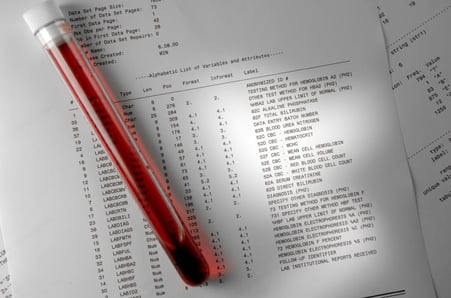In my previous post about lab results interoperability, the sixth in a series of seven blog posts that discuss some misperceptions about lab interfaces and intelligent clinical data extraction software, I described a common misperception we encounter in our work with healthcare organizations. We are frequently told that the HIM department already has scanning, indexing and document management software for integrating paper / unstructured documents such as faxed lab results with the EMR.
Below are the misperceptions this blog series covers. This post addresses the sixth and last misperception in bold type in the list below.
- We are implementing or already have an interface to Quest and/or Labcorp and no longer have to manually enter test results.
- Only a small percentage (typically estimated to be 10 – 30%) of lab results don’t come through the interface so it’s not a high priority problem.
- We have an in-house lab that handles our lab tests.
- All of our test equipment is interfaced with the LIS, which is integrated with our EMR.
- For non-interfaced test results we have scanning software.
- Optical Character Recognition (OCR) isn’t accurate enough for clinical data.
OCR software is used with scanning software to transform the document images produced by scanners, which are human-readable but can’t be ‘read’ by computers, into machine-readable text documents. A machine-readable text document enables computers to manipulate data within the document, such as using software to search for words or phrases, making scanned documents accessible to big data analytics tools and allowing forms processing software to capture key bits of data from fixed-position fields in a scanned paper form.
OCR also enables intelligent clinical data extraction software to capture discrete data elements from unstructured documents (documents that don’t conform to a defined data structure) and place the data into structured EMR database fields, which makes the data more easily accessible to care providers, clinical data analytics tools and other providers via health information exchanges. It also enables the EMR to trigger important patient safety flags based on data contained in scanned documents.
While OCR is very powerful, it isn’t infallible. The accuracy of OCR can be affected by the quality of a scanned image, the font, smudges, etc. As a result, it’s not uncommon for a document that’s been processed with OCR to contain errors. Some common examples include transposing the letter ‘I’ for the letter ‘l’ or the number ‘8’ for the capital letter ‘B,’ or misplacing the number ‘0’ with the letter ‘O’ and so on. Misspelled words render those words unsearchable and can meaningfully alter the numeric value.
Rightfully, within the context of patient care, these errors aren’t acceptable as seemingly innocuous transposition errors can lead to misdiagnosis and improper treatment.
To avoid these errors, HIM departments require clinicians to refer to the scanned image of the original document as the sole source. Unfortunately, as discussed in previous posts, scanning and attaching documents to EMR records can adversely impact physicians’ ability to properly care for their patients and to do so in a timely manner.
However, augmenting scanning and OCR with intelligent clinical data extraction software can provide physicians with fast access to meaningful clinical data within the appropriate EMR data fields while eliminating the errors that are introduced through scanning and OCR.
Intelligent clinical data capture software ‘reads’ text documents and looks for clues to help it identify the actionable clinical data, mark it for extraction and then present the data to users in a rapid data verification client that streamlines and accelerates quality assurance checks of extracted data before committing the values to the EMR. A data entry process cycle that takes a week or longer to capture the data manually can now be accomplished in minutes with best practice workflows supported by trained personnel in place.
Having accurate clinical data in discrete data fields in the EMR benefits patients, providers and hospitals in a myriad of ways – easier for clinicians to access, easier to analyze / trend over time, easier to report – which all means higher quality care / patient safety.
If you’re interested in this topic and would like to understand how intelligent clinical data extraction can help your organization provider higher quality care in a more timely manner, we encourage you to speak to one of our health information specialists for a no obligation assessment to determine whether an intelligent clinical data extraction solution is right for you.